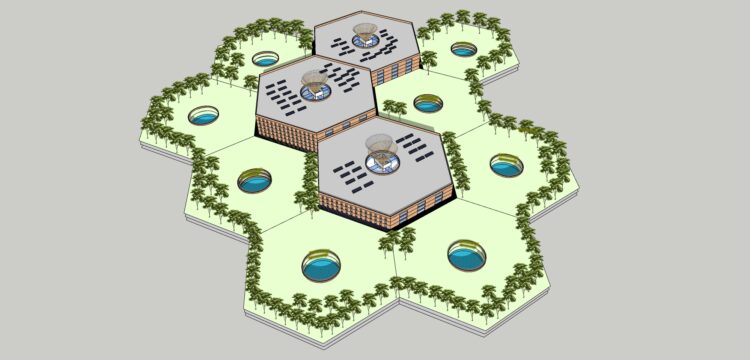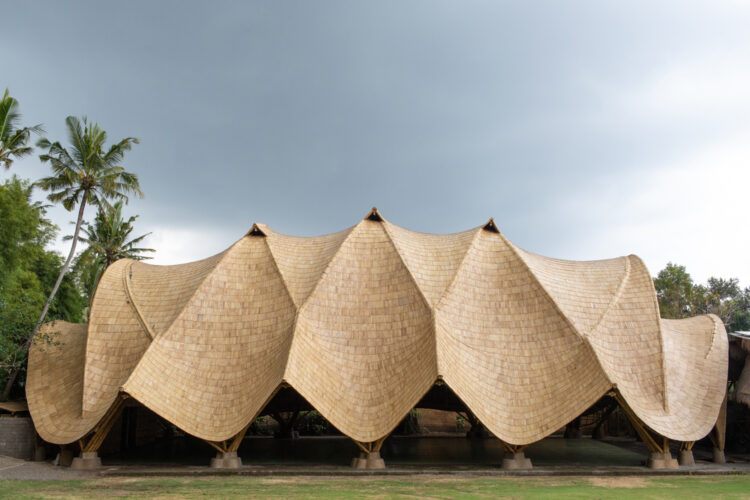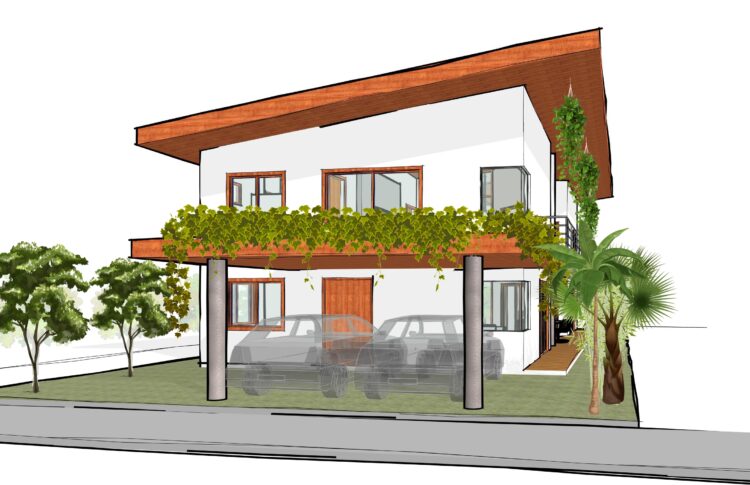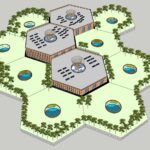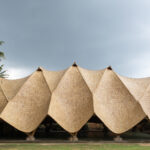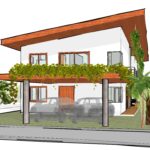Hi there! How is it going? We hope you are coping to stay at peace these days. It is quite clear that climate changes, just as anything else in this planet. Everything moves, and changes within the planet’s cycles. There is probably nothing such as a “stable climate”, as History shows it to us. (Check one of our latest posts on this matter, ‘The Tartary Empire Reset‘). It’s with that in mind that projects such as the Urban Farm created by Thammasat University are so relevant because they acknowledge the natural climate changes, it is, in other words, ‘climate resilient’. Therefore, nature does not want us to control her, she wants us to cooperate with her.
Urban farming has emerged as an innovative solution to many of the world’s growing environmental and food security challenges. As cities expand and green spaces shrink, the need for sustainable urban agriculture has never been more critical. One of the most ambitious and inspiring examples of this movement is the massive rooftop farm at Thammasat University in Thailand. Covering approximately 7,000 square meters, this eco-friendly initiative is Asia’s largest urban rooftop farm and a model for sustainable agriculture in urban environments.
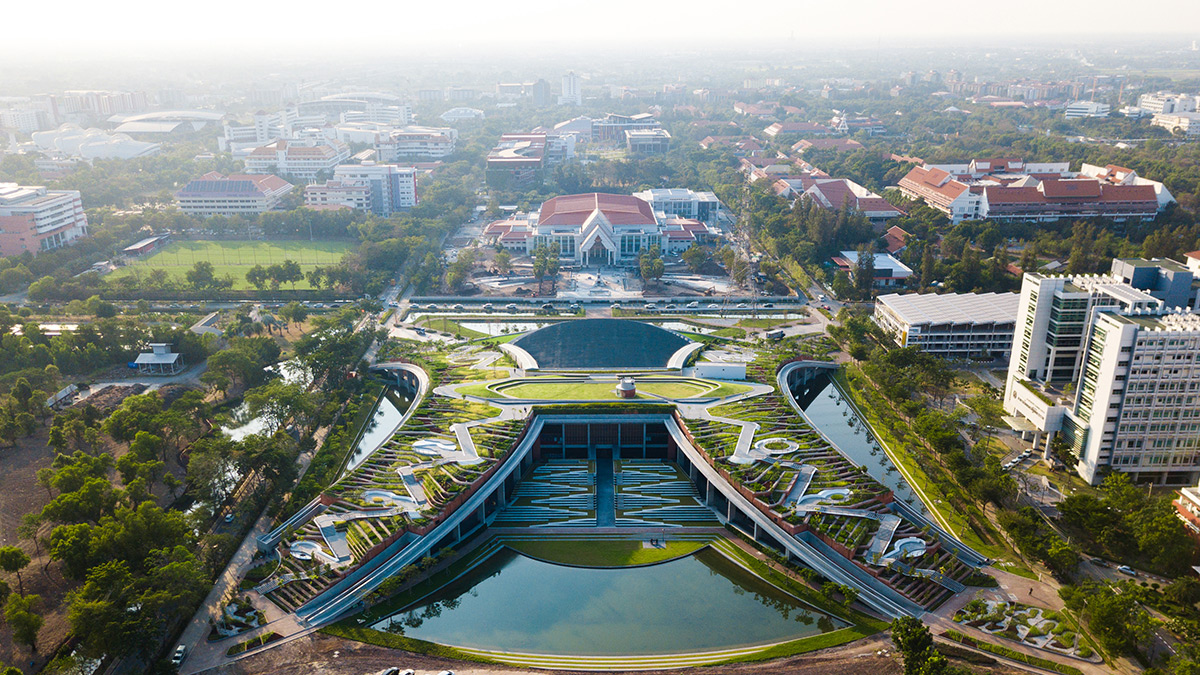
Aerial view of the University’s Rooftop Farm. Source: https://worldlandscapearchitect.com/thammasat-university-the-largest-urban-rooftop-farm-in-asia/?v=dc634e207282
The Vision Behind Thammasat’s Rooftop Farm
Thammasat University, located in Bangkok, Thailand, is known for its commitment to social progress, sustainability, and innovation. In 2019, the university unveiled its impressive rooftop farm at the Rangsit campus, designed by the renowned Thai landscape architects Landprocess. The goal was to address environmental issues such as climate resilience, urban heat, flooding, and food security while promoting ecological balance and sustainability.
The rooftop farm is a perfect blend of traditional agricultural practices and modern green infrastructure. Inspired by Thailand’s traditional rice terraces, the design incorporates a cascading layout that allows rainwater to be collected and channeled effectively, reducing runoff and mitigating the risk of urban flooding.
Similar rice terraces can be found in Bali, Indonesia, where they face serious environmental issues due to changes driven by tourism expansion. Check more about this interesting topic in one of our previous Blog posts: ‘Permaculture Volunteering Experience‘.

Top view of the Thammasat University’s Rooftop Farm and its large extension. Source: https://worldlandscapearchitect.com/thammasat-university-the-largest-urban-rooftop-farm-in-asia/?v=dc634e207282

The project’s climatic strategies synthesized and the perspective of the green complex. Source: https://worldlandscapearchitect.com/thammasat-university-the-largest-urban-rooftop-farm-in-asia/?v=dc634e207282
A Multifunctional Green Space
The Thammasat rooftop farm is much more than a food-growing space. It serves multiple functions that contribute to environmental sustainability, urban resilience, and education. Some of the key features of the farm include:
- Sustainable Agriculture: The farm grows over 40 edible plant species, including native vegetables, herbs, and rice. By incorporating organic farming techniques, it reduces the reliance on chemical fertilizers and pesticides, promoting healthier food production.
- Water Management System: The cascading terraces, an indigenous farming practice, act as a natural irrigation system, capturing and storing rainwater to nourish crops. This reduces the risk of flooding and helps in water conservation.
- Cooling Effect and Energy Efficiency: The greenery absorbs heat, reducing the temperature of surrounding buildings and lessening the need for air conditioning, which, in turn, lowers energy consumption.
- Carbon Sequestration and Air Purification: The farm contributes to better air quality by filtering pollutants and absorbing carbon dioxide, thus playing a role in reducing Bangkok’s urban heat island effect.
- Biodiversity and Habitat Creation: It provides a home for various species of insects, birds, and pollinators, helping to restore urban biodiversity.
- Educational and Community Engagement: The farm serves as a learning hub for students, researchers, and the community. It offers workshops, internships, and research opportunities that promote sustainable agriculture and urban farming practices.
- Renewable Energy: The rooftop farm is powered up by solar panels that produce enough energy for its food production, water management, and classroom operations.

The rooftop farm’s water management strategy using Indigenous farming practices, similar to rice fields. Source: https://worldlandscapearchitect.com/thammasat-university-the-largest-urban-rooftop-farm-in-asia/?v=dc634e207282
A Solution to Urban Food Insecurity
Food security is a major challenge in rapidly growing cities, especially in developing countries. By incorporating urban farms like Thammasat’s rooftop project, cities can improve local food production and reduce reliance on imported food. The produce grown on the rooftop is used in the university’s cafeteria, supporting a farm-to-table concept that ensures fresh, organic food for students and staff.
Additionally, the project helps to raise awareness about sustainable food production and consumption among students, inspiring the next generation to embrace eco-friendly solutions for urban living.

The different types of crops in the rooftop farm and their specific production potential. Source: https://worldlandscapearchitect.com/thammasat-university-the-largest-urban-rooftop-farm-in-asia/?v=dc634e207282

Perspective showing the students’ engagement in farming activities at the University’s rooftop. Source: https://worldlandscapearchitect.com/thammasat-university-the-largest-urban-rooftop-farm-in-asia/?v=dc634e207282
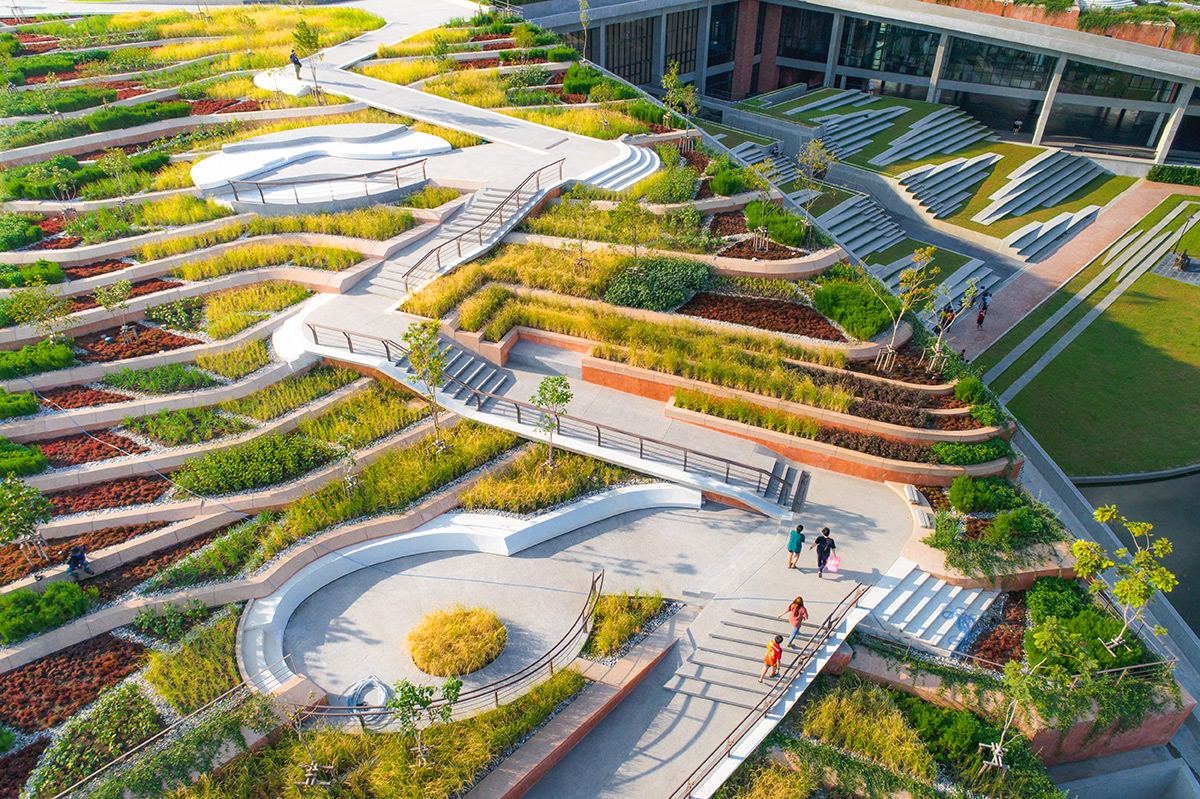
Perspective of the beautiful landscape architecture created by the rooftop farm designers. Source: https://worldlandscapearchitect.com/thammasat-university-the-largest-urban-rooftop-farm-in-asia/?v=dc634e207282
Inspiration for Future Urban Developments
Thammasat University’s rooftop farm serves as an exemplary model for future urban development projects worldwide. Its success demonstrates that cities can integrate green infrastructure into existing spaces to create healthier, more sustainable environments. Other universities, businesses, and urban planners can draw inspiration from this initiative to implement similar projects in their cities.
Conclusion
The rooftop farm at Thammasat University is a shining example of how urban areas can address the pressing issues of climate resilience, food security, and environmental sustainability. With its innovative design, multifunctional benefits, and commitment to community engagement, it stands as a testament to the power of green architecture and sustainable urban farming.
As the world continues to urbanize, adopting similar eco-friendly projects will be crucial in ensuring a sustainable future for both people and the planet. Thammasat University’s groundbreaking approach provides a blueprint for cities worldwide to integrate sustainability into their urban landscapes—proving that even in the heart of a bustling metropolis, nature and innovation can coexist harmoniously. ♥

Night time perspective of the rooftop farm. Source: https://bitl.to/42HE
Important Sources:


